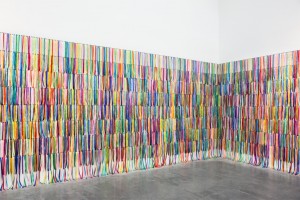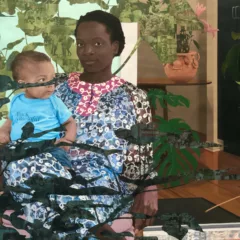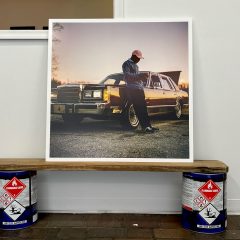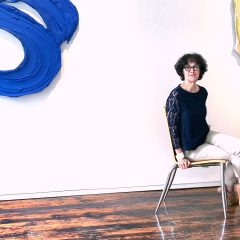Liz Kelley (LK)- Hi Benjamin, thanks for taking the time to talk with me. Can you tell me a little more about how a visitor can expect to interact with the exhibit? (NOTE: answers reflect a mixture direct quotes and paraphrasing)
Benjamin Godsill (BG)- There are several participatory installations. Our lobby gallery is free and open to the public and it is currently hosting “I Wish Your Wish.” Ribbons printed with wishes from visitors at previous exhibitions hang on the wall. You take the ribbon, tie it on your wrist, and then replace it with a wish of your own. The wish comes true when the ribbon wears off your wrist. So by participating in this you are helping someone else’s wish to come true.
In “First Love” a police artist, who usually works with victims of violent crimes, asks visitors to describe their first love, which they will then draw. As a participant you must search yourself for the memory of your first love and then put that memory into words. The visitor does the drawing with their voice, rather than their hand. Neuenschwander wanted to explore the way we can “misremember” people or events.
LK- What kind of work goes into making sure “I Wish Your Wish” stays stocked?
BG- Every six weeks a new set of ribbons is made. Then the museum and artist work together to restock the exhibit space.
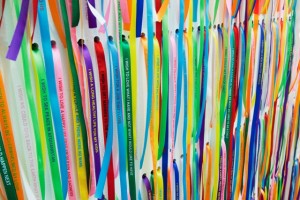
LK- What do you do with the portraits created in “First Love”?
BG- They are hung on the gallery walls daily, added to those done previously.
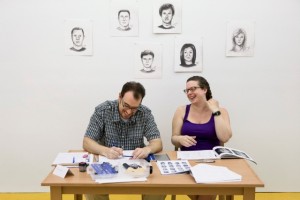
LK- The installation “Walking in Circles” chronicles visitors’ movements through the gallery. Can you tell me more about that?
BG- Circles from a half to three meters in size were painted on the floor with semi clear adhesive. They were barely visible when they first went down, but as people walk over it dirt from your shoes gets rubbed into the circles to make them more visible. The same circles remain throughout the exhibit.
LK– Can you tell me more about the installation “Rain Rains”?
BG- This is a marking of both time and space. In the gallery space, twenty-five hanging buckets are matched with a companion bucket on the floor. The top bucket slowly drips water into the bottom bucket. It creates an amazing sound, like a rain forest. The top buckets drain every four hours. An aluminum ladder is part of the installation and staff and security guards use it to reset the buckets.
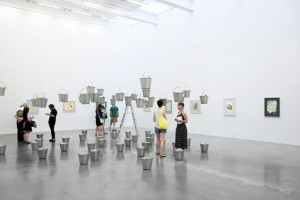
LK- How do you think your involvement in these immersive installations affects the visitor experience?
BG- Everything changes everything—but we try very hard not to let our interpretation impose on the visitor.
LK- How does curating an immersive exhibit like this differ from a “traditional” exhibit?
BG- This exhibit takes a lot of staff resources. But it is also very new and allows for a “generosity of spirit”—that is, everything is very open and plain for the viewer—there is very little hiding. There is space for the visitor to engage and leave a mark of themselves behind.
LK- This exhibit opened recently, what types of reactions have you seen from visitors so far?
BG- People seem thrilled to interact. They are very interested in the slight gestures that are mixed in with the bold lines of her work. There have been positive reviews across the board. We see a lot of excitement and interest in an artist who is not as well known in the U.S. as she should be.
LK- Benjamin, thank you for your time and willingness to take us “behind the scenes”!
The New Museum, New York, will host this installation, filling two floors and the lobby galleries now to September 19, 2010.



